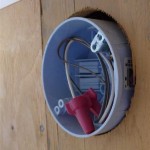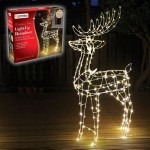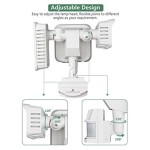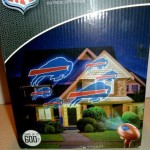Essential Aspects of Outdoor Directional Lighting
Outdoor directional lighting is a critical aspect of enhancing the aesthetic appeal and safety of outdoor spaces. Its proper implementation requires consideration of various essential factors that can significantly impact its effectiveness. This article explores the key components that contribute to the successful use of outdoor directional lighting, providing insights for professionals and homeowners alike.
1. Purpose and Functionality:
Determine the primary purpose of the lighting, whether it's for security, pathway illumination, or accentuating architectural features. This will guide the selection of appropriate fixtures, beam angles, and light distribution.
2. Fixture Selection:
Choose fixtures that complement the architectural style of the outdoor space and meet specific lighting requirements. Consider factors such as durability, weather resistance, and compatibility with the desired lighting effect.
3. Beam Angle:
The beam angle of a fixture determines the spread and direction of light. Narrow beam angles create focused illumination, while wider angles provide broader coverage. Select the appropriate beam angle based on the intended lighting purpose.
4. Light Distribution:
The distribution of light from a fixture refers to the pattern in which it's emitted. Symmetrical distribution provides uniform illumination, while asymmetrical distribution directs light in a specific direction. Choose the distribution that best suits the lighting needs of the area.
5. Color Temperature:
Color temperature affects the ambiance and mood of an outdoor space. Warmer temperatures (below 3000K) create a cozy and inviting atmosphere, while cooler temperatures (above 4000K) enhance visibility and clarity.
6. Lumen Output:
The lumen output measures the amount of light emitted by a fixture. Determine the required lumen output based on the area and lighting purpose. Insufficient lumen output can result in poor visibility, while excessive lumen output can create glare.
7. Shielding and Glare Control:
Shielding and glare control prevent light spillage and discomfort. Choose fixtures with proper shielding and lenses to minimize glare and maintain visual comfort for users and neighbors.
Conclusion:
By considering these essential aspects, outdoor directional lighting can effectively enhance the ambiance, security, and functionality of outdoor environments. Careful planning and implementation ensure that the lighting meets the specific needs and requirements of the space, creating a welcoming and visually appealing atmosphere.

Alcon Lighting 9165 Directional Adjustable Led Architectural Grade Outdoor Landscape Spotlight 120v Tree Uplighting 360º Rotate 180º Tilt

Low Voltage Outdoor Directional Light Brass Lighting

Elstead Elite 3 Anodised Aluminium Large Garden Led Multi Directional

Bl11 Alexander Mini Up Directional Light Clarolux

Orbit Directional Light Led 3w Outdoor Cast Aluminum 12v 4700k Sand Majestic Lighting

Low Voltage Outdoor Directional Light Brass Lighting

Deasia Ip54 Bi Directional Charcoal Outdoor Wall Light Fra108 The Lighting Super

Access Lighting Marino Tall Bi Directional Outdoor Led Wall Mount Black In The Lights Department At Com

Cd45 Adjustable Led Aluminum Outdoor Spotlight Kings Lighting

Hinkley 16710mz Hardy Island Directional 12v 4 00 Watt Matte Broe Landscape Well Light
Related Posts







